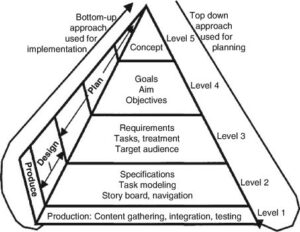Multimedia plans are very important before building an actual lesson. People should think deeply base on the “SECTIONS” model that the lecture explai ns. Nowadays, there are many multimedia lessons had well developed, so people should first make the lesson as fun as possible to catch the audience’s eyes without drying them out through the lesson. Brainstorm and detail plans will make teachers less frustrating if students lose interest or too difficult to follow. The teacher may easily change to another way of teaching this concept because they had fully prepared those outcomes. When people making plans, they should know how to interact with their audience that is related to the Ecological theory. This theory demonstrates how child development can interact with the environment and how environmental factors will influence children’s behavior (Paquette&Ryan, 2009). Therefore, if the teacher had made enough interactions with students, they will not only learn some knowledge through this lesson but also use this knowledge to apply future problems.
ns. Nowadays, there are many multimedia lessons had well developed, so people should first make the lesson as fun as possible to catch the audience’s eyes without drying them out through the lesson. Brainstorm and detail plans will make teachers less frustrating if students lose interest or too difficult to follow. The teacher may easily change to another way of teaching this concept because they had fully prepared those outcomes. When people making plans, they should know how to interact with their audience that is related to the Ecological theory. This theory demonstrates how child development can interact with the environment and how environmental factors will influence children’s behavior (Paquette&Ryan, 2009). Therefore, if the teacher had made enough interactions with students, they will not only learn some knowledge through this lesson but also use this knowledge to apply future problems.
Videos with popup informational text boxes and embedded multiple-choice questions are a very unique way to reflect the knowledge that the audience had learn through that video. The multimedia media principle that we have used is signaling. The signaling principle is helping the audience to highlight the important concepts that we want them to pay attention to. Also, it can help the audience to reflect and self-regulation. If we put the text boxes or questions on the same page, at this point we are trying to emphasize the split attention principle. We are catching the audience’s attention on the same concepts without going back and forth. People can pose the video to do the questions and go at their own pace. Overall, text boxes and questions can use in a valuable way to test engagement.
Reference:
Paquette, D., & Ryan, J. (2001). Bronfenbrenner’s Ecological Systems Theory. https://dropoutprevention.org/wp-content/uploads/2015/07/paquetteryanwebquest_20091110.pdf
https://link.springer.com/referenceworkentry/10.1007%2F978-0-387-78414-4_146
Leave a Reply